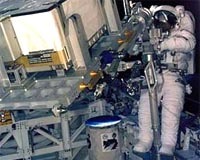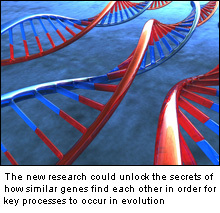A Japanese astronaut plans to throw a boomerang inside a space station to test how it can fly in zero gravity, an official said Wednesday.
Astronaut Takao Doi, 53, is set to travel on a US shuttle in March to the International Space Station, where he will be in charge of construction of a Japanese scientific testing room.
It is believed gravity is needed for a boomerang to fly back to the throwing spot, but no one has tried in zero gravity.

|
| ©Unknown
|
| Astronaut Takao Doi
|




Comment: ITN News story: